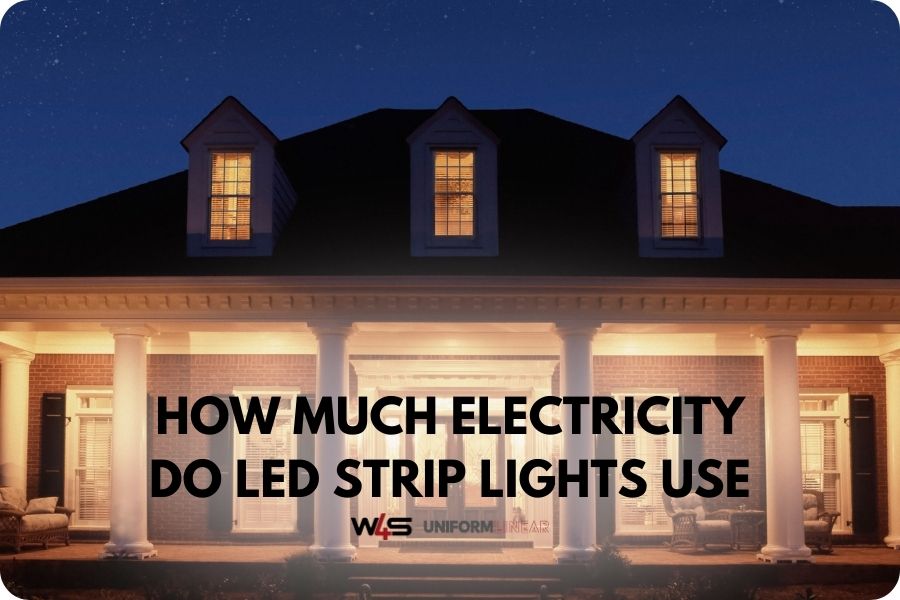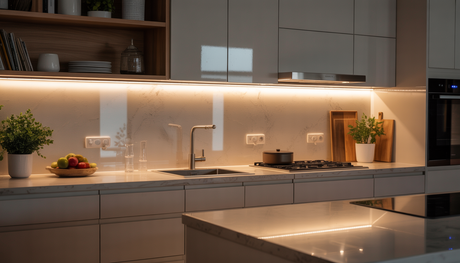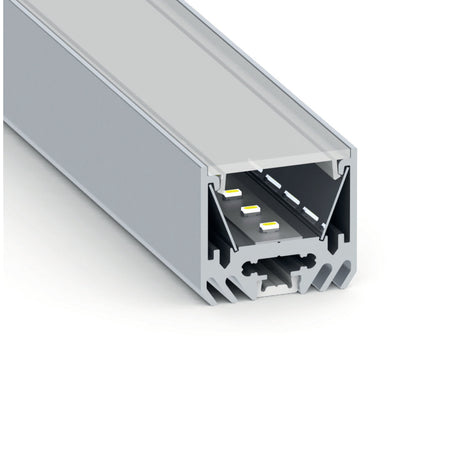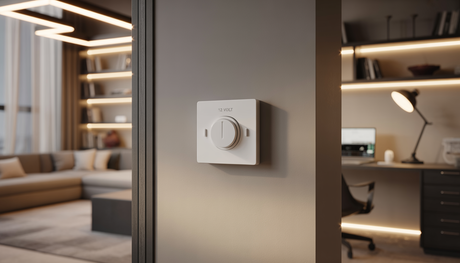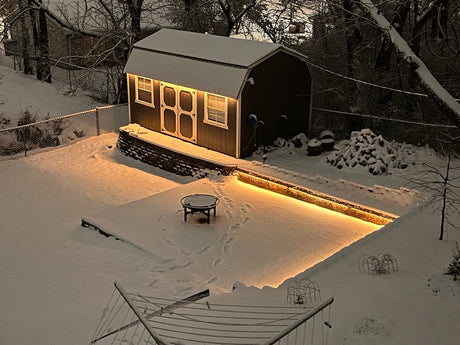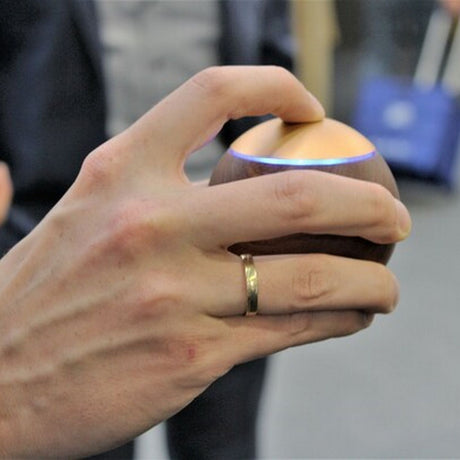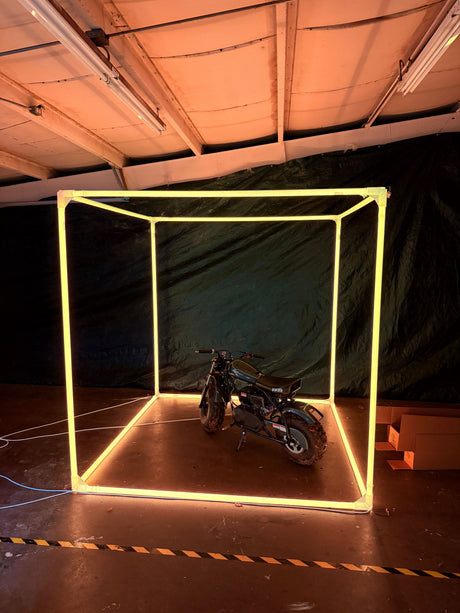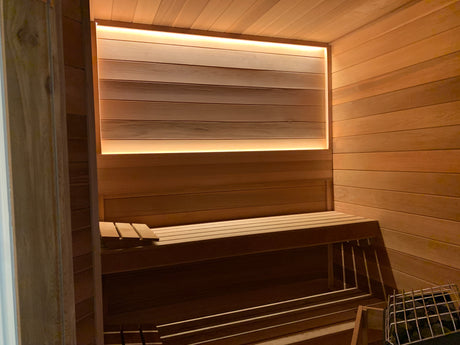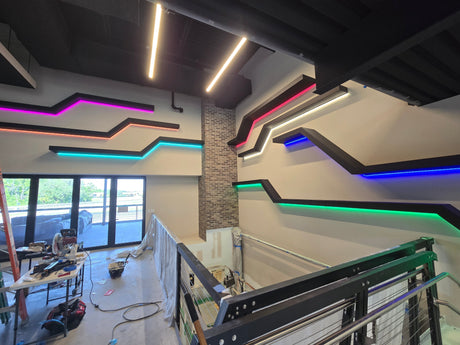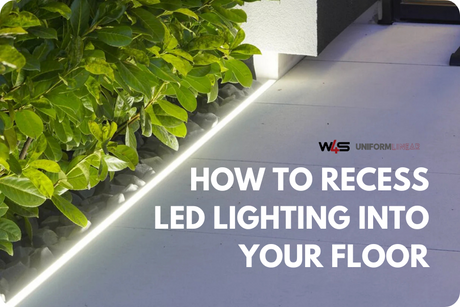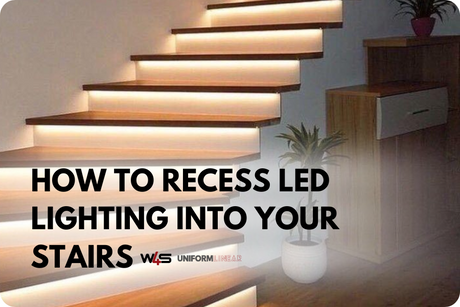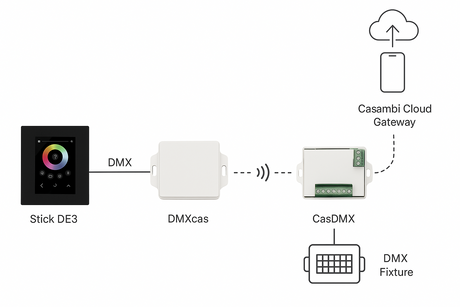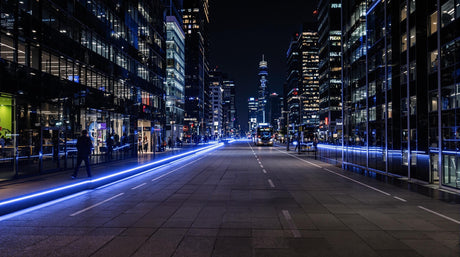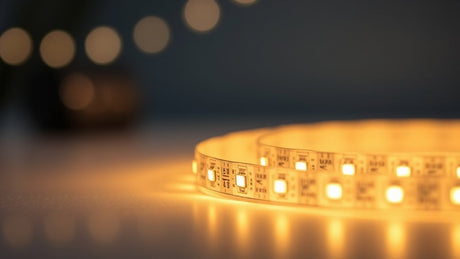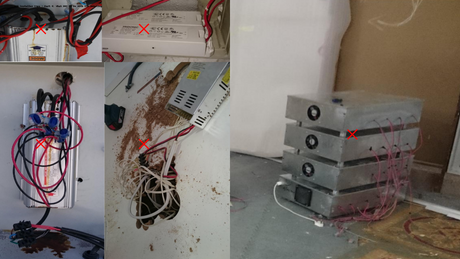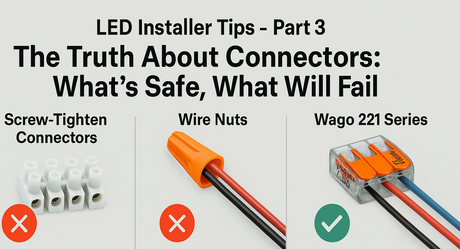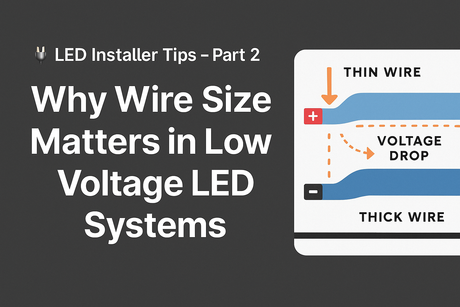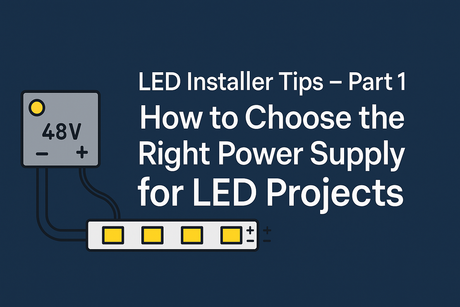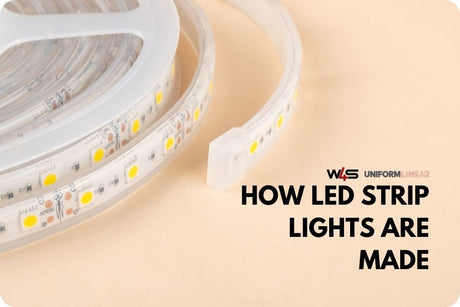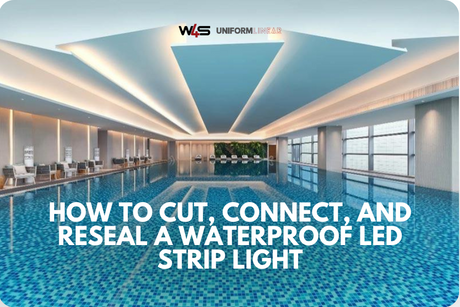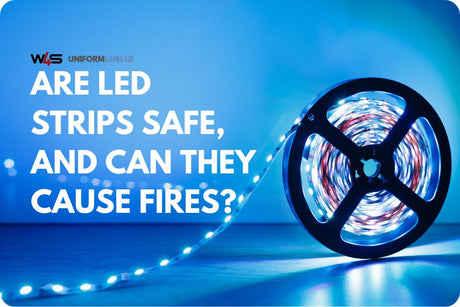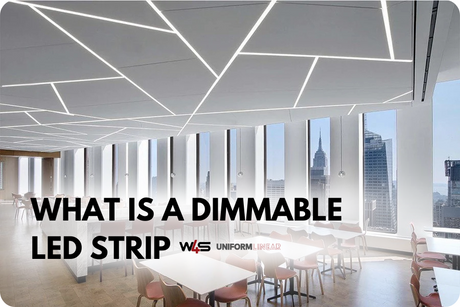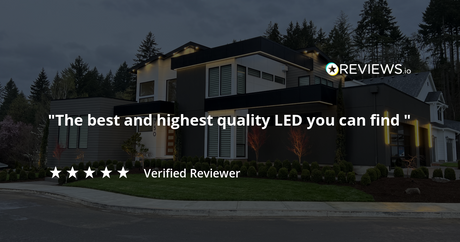LED strip lights have become a popular lighting solution due to their versatility, energy efficiency, and aesthetic appeal. However, many people wonder, how much electricity LED light strips use. Understanding their power consumption can help you make informed decisions about usage, cost, and energy efficiency.
This comprehensive guide explores the factors affecting LED strip light power consumption, how to calculate it, and ways to enhance energy efficiency—all while answering pressing questions like, do LED lights make your electric bill higher?
Factors That Affect the Energy Efficiency of Your LED Strip Lights
Several factors influence the electricity usage of the majority of LED strips. Understanding these aspects can help you make informed choices and optimize your setup for maximum energy efficiency.

Length of Your Run
The length of your LED strip is a major determinant of its overall power consumption. Each meter of the strip adds to the total wattage draw. For instance, a strip rated at 15 watts per meter will consume 75 watts for a 5-meter installation.
Longer runs require careful planning to avoid inefficiencies such as uneven brightness or unnecessary power draw.
Power Supply
Selecting the right power supply is critical for energy efficiency and the longevity of your LED strips. A mismatched power supply can lead to inefficiencies, overheating, or even damage to the LED strip.
To ensure optimal performance, choose a power supply that matches the voltage and wattage requirements of your strip and provides an additional 20% capacity to handle surges or fluctuations. For example, a strip with a total power draw of 100 watts should use a power supply rated for at least 120 watts.
Controllers
Controllers, such as dimmers or RGB modules, enhance functionality but slightly increase power usage. These devices manage brightness, colors, and effects, drawing additional energy to operate. While their impact on power consumption is minimal, opting for high-efficiency controllers can help mitigate unnecessary electricity usage.
Wiring
The quality and gauge of the wiring used in your setup can significantly impact energy efficiency. Low-quality or inadequate wiring can result in voltage drops, causing the strip to draw more power to maintain brightness.
Using high-grade, appropriately sized wiring minimizes energy loss and ensures consistent light output across the strip.
Surrounding Temperature
Ambient temperature plays a crucial role in LED efficiency. High temperatures can reduce LED performance, shorten lifespan, and increase power consumption. Using aluminum channels or heat sinks can dissipate excess heat, ensuring your LEDs operate efficiently even in warmer environments.
Additional Factors
Here are two additional factors that are always overlooked:
Voltage Drop
Voltage drop occurs in longer LED strip installations, especially when using lower-voltage options like 12V strips. This can result in uneven brightness and increased power usage as the system compensates for reduced voltage.
To combat this issue, opt for higher-voltage strips like 24V or 48V, which are better suited for longer runs and provide consistent brightness across the entire length.
Light Color and Type
The type and color of LED lights impact energy consumption. White LEDs are generally more energy-efficient compared to RGB (red, green, blue) variants. RGB LEDs require additional diodes to produce different colors, leading to a higher power draw.
Additionally, cool white LEDs typically consume slightly less energy than warm white ones, making them a better choice for energy-conscious applications.

How to Calculate Your LED Strip Light's Power Consumption
To calculate how much power LED strips use, follow this formula:
Watts per meter × total strip length = total power consumption.
Example Calculation
Let’s determine the LED strip wattage for a 24V White Lily IP20 strip rated at 12 watts per meter:
- Strip Length: 6 meters
- Watts per Meter: 12 watts
Total Power Consumption = 12 watts × 6 meters = 72 watts.
Using this value, you can calculate the daily cost by multiplying the total wattage by the number of hours the strip operates and your electricity rate. For example, if the strip runs for 5 hours daily at $0.12 per kWh, the daily cost is approximately $0.043.
How Energy Efficient Is My Light Strip?
Energy efficiency depends on how much light your LED strip produces compared to its power consumption, measured in lumens per watt (lm/W).
For instance, an LED strip with 1,200 lumens and 12 watts has an efficiency of 100 lm/W, which is much higher than traditional incandescent or fluorescent lighting. High-efficiency strips save energy and provide superior brightness, making them cost-effective over time.
Choosing an LED Strip Power Supply With the Correct Wattage
Selecting the right power supply ensures efficient operation and safety. After calculating the total wattage, choose a power supply with at least 20% more capacity to handle unexpected surges or long-term wear.
Example Scenario
For a 72-watt setup, a power supply rated at 100 watts provides adequate overhead. We recommend Mean Well power supplies, like the Mean Well LPV-100-24 for 24V strips.
For more demanding applications requiring higher power supply wattage, consider the Mean Well HLG-320H-24A, which supports up to 320 watts.
LED Energy Efficiency vs. Traditional Light Sources
When comparing LED light electricity consumption to traditional bulbs, LEDs come out on top in terms of energy savings, brightness, and longevity.
| Light Source | Lifespan (Hours) | Lumens per Watt | Energy Usage | Cost Efficiency |
|---|---|---|---|---|
|
Incandescent Bulbs |
1,000 |
15 |
High |
Low |
|
Fluorescent Bulbs |
10,000 |
60 |
Moderate |
Moderate |
|
LED Strip Lights |
50,000 |
100+ |
Low |
High |
By using LEDs, you significantly reduce how much electricity a light uses while enjoying better lighting quality.

How to Improve the Energy Efficiency of Your LED Strips
Enhancing the energy efficiency of LED strips is a must for long-term benefits and for reducing operational costs over time. Here’s a deeper look into strategies you can use:
Higher Quality Strips
Investing in high-quality LED strip lights ensures better performance and lower energy consumption. Premium strips deliver superior lumens per watt, meaning they produce more light with less power.
Additionally, these strips often have extended lifespans and are more resistant to issues like overheating, which can lead to unnecessary energy use and potential failure.
Use an Aluminum Channel
An aluminum channel provides multiple benefits, such as better heat dissipation and protection against wear and tear. By reducing the heat buildup, the LED strips operate more efficiently, consuming less energy and lasting longer.
Aluminum channels also enhance light diffusion, giving a cleaner and more professional appearance.
Use a Timer or Smart Controller
Incorporating timers or smart controllers can significantly cut down on wasted energy. These devices let you schedule when the lights turn on or off, ensuring they aren’t left running unnecessarily.
For instance, you can set LED strips in retail spaces to automatically dim or turn off after business hours.
Choose the Right Voltage
Selecting the proper voltage is crucial for optimizing energy efficiency. Higher-voltage strips like 24V or 48V are especially efficient for longer runs, as they minimize voltage drops that can cause uneven brightness and increased power draw.
For smaller installations, 12V strips may suffice, but larger commercial applications benefit more from higher-voltage options.
Install Reflective Surfaces
Positioning your LED strips near reflective surfaces like mirrors, polished aluminum, or white walls amplifies their brightness without requiring additional energy. This allows you to achieve the desired lighting effect while keeping electricity usage minimal.
Optimize Spacing
Strategically spacing LED strips reduces the need for over-lighting. Proper spacing ensures even illumination while using fewer strips overall, conserving energy without sacrificing quality.
Consider Dimmable LED Strips
Dimmable LED strips allow you to adjust brightness levels based on the environment. Lowering the brightness when full intensity isn’t required can significantly reduce electricity usage over time.
Regular Maintenance
Cleaning your LED strips and their surrounding areas removes dust and debris that can obstruct light output. Proper maintenance ensures the strips operate at peak efficiency, reducing the need for additional lighting fixtures.
Switch to Energy-Efficient Power Supplies
Pair your LED strips with energy-efficient power supplies. A high-quality power supply not only delivers stable performance but also minimizes energy wastage and offers green benefits, especially during prolonged use.
Pro Tip: Look for power supplies with certifications like ENERGY STAR or high-efficiency ratings.
Wrapping Up
Understanding how much is the consumption of LED strip lights is essential for making smart energy decisions. With their superior energy efficiency and lower power draw, the majority of LED strip are an excellent choice for anyone looking to save money and reduce their environmental footprint.
However, proper installation and maintenance are critical. Using high-quality strips, the correct power supply, and appropriate accessories will ensure your setup is safe and efficient. Investing in these practices can save you hundreds on electricity bills over time.
Don’t spend another day wasting electrical energy and racking up high-power ratings! Explore our premium selection of LED strips and accessories at Wired4Signs.
FAQs
Here are some of the most commonly asked questions about this topic:
Do LED strips use a lot of electricity?
No, LED strips are highly energy-efficient, consuming significantly less power compared to traditional lighting solutions like incandescent or fluorescent bulbs.
How long can you leave an LED strip on?
LED strips are designed to last up to 50,000 hours, allowing them to run continuously without significantly affecting LED light bulb electricity usage.
Does LED lighting save a lot of money?
Yes, unlike incandescent bulbs and fluorescent lights, LEDs save money in the long term by reducing electricity consumption and maintenance costs compared to traditional lighting systems.
